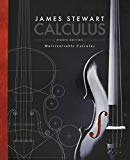
Concept explainers
Suppose f is a continuous function defined on a rectangle R = [a, b] × [c, d].
(a) Write an expression for a double Riemann sum of f. If f(x, y) ≥ 0, what does the sum represent?
(b) Write the definition of
(c) What is the geometric interpretation of
(d) How do you evaluate
(e) What does the Midpoint Rule for double
(f) Write an expression for the average value of f.
(a)
To write: An expression for a double Riemann sum of the given function.
Explanation of Solution
Given:
The continuous function
The double integral of f over the rectangle R is,
Here,
The given continuous function is
The sample points of each rectangle is denoted by
The image value of the sample points under the function
The Riemann sum constants are denoted by m, n.
The sum mentioned above
(b)
To write: The definition of
Explanation of Solution
The double integral can be expressed in terms of double Riemann sum as follows:
The double integral of f over the rectangle R is,
Here,
The given continuous function is
The sample points of each rectangle is denoted by
The image value of the sample points under the function
The Riemann sum constants are denoted by m, n.
(c)
To write: The geometric interpretation of
Explanation of Solution
When
If suppose the given function f takes both positive and negative values, then it does not denote the volume exactly. But, it is taken that the volume of the function of the two graphs one above the xy-plane and one below the xy-plane.
(d)
To evaluate: The value of the double integral
Explanation of Solution
Rewrite the indefinite double integral by definite double integral from the equations or inequalities in the given rectangle. Then, as per the rules of integration, integrate it to get the value of the given double integral. That is,
(e)
To interpret: About the Midpoint Rule for double integrals.
Explanation of Solution
The double integral,
Here,
The given function is
The mid points of each rectangle is denoted by
The Riemann sum constants are denoted by m, n.
Separate the given region by small rectangles by the method of Riemann sum for the double integrals. Then, pick the sample points from the Midpoint of each rectangle.
(f)
To write: The expression for the average value of f.
Explanation of Solution
The area of the given rectangle R is denoted by
Then,
Want to see more full solutions like this?
Chapter 15 Solutions
Bundle: Multivariable Calculus, 8th + WebAssign Printed Access Card for Stewart's Calculus, 8th Edition, Single-Term
- Please help me with this question as I want to know how can I perform the partial fraction on this alebgric equation to find the time-domain of y(t)arrow_forwardEvaluate F³ - dr where ♬ = (4z, -4y, x), and C' is given by (t) = (sin(t), t, cos(t)), 0≤t≤ñ .arrow_forwardMid-Term Review Find the formula for (f + g)(x). f(x) = x² - 10x + 25 and g(x) = x² - 10x + 24 (f + g) (x) = [ 2 ]x² X + DELL Skip Sarrow_forward
- Calculus III May I please have some elaborations on Example 2 part a? Thank you.arrow_forward1. A bicyclist is riding their bike along the Chicago Lakefront Trail. The velocity (in feet per second) of the bicyclist is recorded below. Use (a) Simpson's Rule, and (b) the Trapezoidal Rule to estimate the total distance the bicyclist traveled during the 8-second period. t 0 2 4 6 8 V 10 15 12 10 16 2. Find the midpoint rule approximation for (a) n = 4 +5 x²dx using n subintervals. 1° 2 (b) n = 8 36 32 28 36 32 28 24 24 20 20 16 16 12 8- 4 1 2 3 4 5 6 12 8 4 1 2 3 4 5 6arrow_forward= 5 37 A 4 8 0.5 06 9arrow_forward
- Consider the following system of equations, Ax=b : x+2y+3z - w = 2 2x4z2w = 3 -x+6y+17z7w = 0 -9x-2y+13z7w = -14 a. Find the solution to the system. Write it as a parametric equation. You can use a computer to do the row reduction. b. What is a geometric description of the solution? Explain how you know. c. Write the solution in vector form? d. What is the solution to the homogeneous system, Ax=0?arrow_forward2. Find a matrix A with the following qualities a. A is 3 x 3. b. The matrix A is not lower triangular and is not upper triangular. c. At least one value in each row is not a 1, 2,-1, -2, or 0 d. A is invertible.arrow_forwardFind the exact area inside r=2sin(2\theta ) and outside r=\sqrt(3)arrow_forward
- A 20 foot ladder rests on level ground; its head (top) is against a vertical wall. The bottom of the ladder begins by being 12 feet from the wall but begins moving away at the rate of 0.1 feet per second. At what rate is the top of the ladder slipping down the wall? You may use a calculator.arrow_forwardExplain the focus and reasons for establishment of 12.4.1(root test) and 12.4.2(ratio test)arrow_forwarduse Integration by Parts to derive 12.6.1arrow_forward
 Algebra & Trigonometry with Analytic GeometryAlgebraISBN:9781133382119Author:SwokowskiPublisher:Cengage
Algebra & Trigonometry with Analytic GeometryAlgebraISBN:9781133382119Author:SwokowskiPublisher:Cengage College Algebra (MindTap Course List)AlgebraISBN:9781305652231Author:R. David Gustafson, Jeff HughesPublisher:Cengage Learning
College Algebra (MindTap Course List)AlgebraISBN:9781305652231Author:R. David Gustafson, Jeff HughesPublisher:Cengage Learning Elements Of Modern AlgebraAlgebraISBN:9781285463230Author:Gilbert, Linda, JimmiePublisher:Cengage Learning,
Elements Of Modern AlgebraAlgebraISBN:9781285463230Author:Gilbert, Linda, JimmiePublisher:Cengage Learning, College AlgebraAlgebraISBN:9781305115545Author:James Stewart, Lothar Redlin, Saleem WatsonPublisher:Cengage Learning
College AlgebraAlgebraISBN:9781305115545Author:James Stewart, Lothar Redlin, Saleem WatsonPublisher:Cengage Learning




